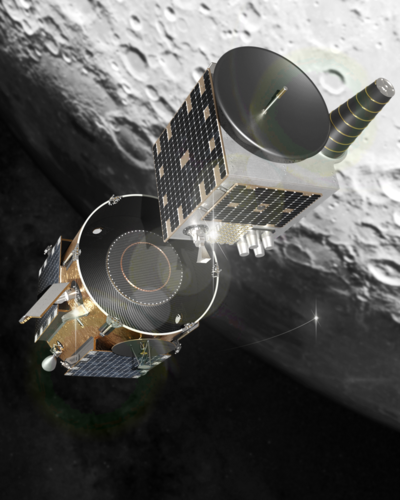A new mission will search for habitable planets at Alpha Centauri
Wednesday, 22 March 2023 17:20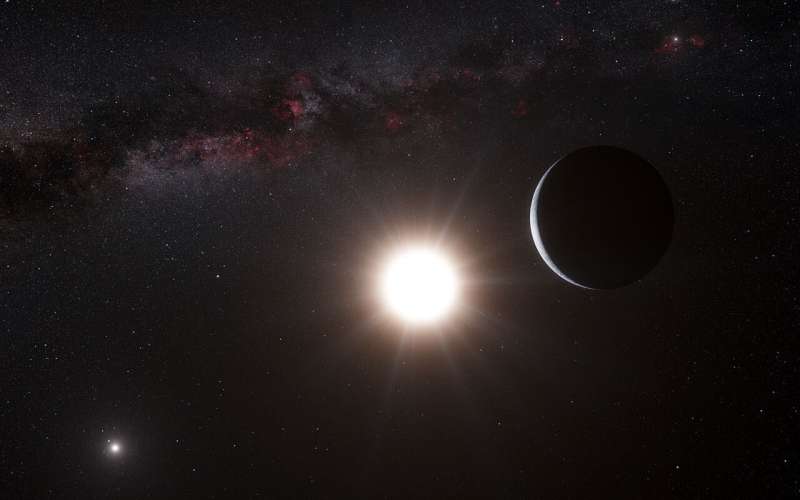
Alpha Centauri is our closest stellar neighbor, a binary star system located just 4.376 light-years away. Despite its proximity, repeated astronomical surveys have failed to find hard evidence of extrasolar planets in this system. Part of the problem is that the system consists of two stars orbiting each other, which makes detecting exoplanets through the two most popular methods very challenging. In 2019, Breakthrough Initiatives announced they were backing a new project to find exoplanets next door—the Telescope for Orbit Locus Interferometric Monitoring of our Astronomical Neighborhood (TOLIMAN, after the star's ancient name in Arabic).
This low-cost mission concept was designed by a team from the University of Sydney, Australia, and aims to look for potentially-habitable exoplanets in the Alpha Centauri system using the Astrometry Method.
Lunar bounce
Wednesday, 22 March 2023 15:06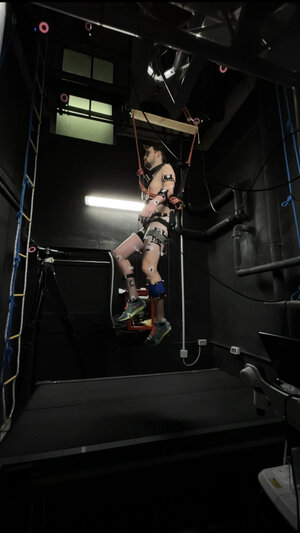 Image:
A participant of the Movement in Low gravity environments (MoLo) programme from ESA’s space medicine team at the European Astronaut Centre in Cologne, Germany, testing movements in simulated reduced gravity, called hypogravity, on Earth.
Image:
A participant of the Movement in Low gravity environments (MoLo) programme from ESA’s space medicine team at the European Astronaut Centre in Cologne, Germany, testing movements in simulated reduced gravity, called hypogravity, on Earth. NRO signs agreements with commercial providers of hyperspectral imagery
Wednesday, 22 March 2023 15:04
The National Reconnaissance Office has signed five-year agreements with six commercial providers of hyperspectral satellite imagery
The post NRO signs agreements with commercial providers of hyperspectral imagery appeared first on SpaceNews.
Measuring the cohesive force of meteorite fragments to identify the mobility of asteroids
Wednesday, 22 March 2023 13:58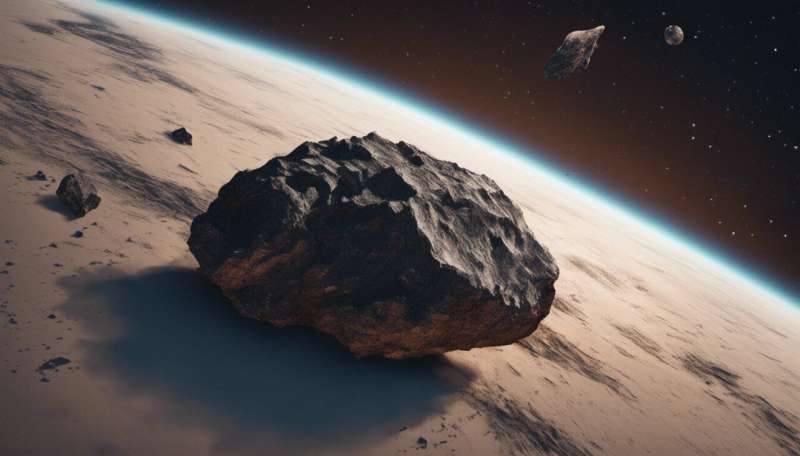
The cohesive force of asteroid particles influence microgravity and can be evaluated under several assumptions of particle size and their sensitivity to particle shape. Approximately hundreds of kilograms of material fall on to Earth's atmosphere daily from space, and filter down as tiny grains and fine dust. Many meteorites that reach Earth from space are pieces of asteroids.
In a new report now published in Science Advances, Yuuya Nagaashi and a research team in planetology at the Kobe University in Japan, conducted cohesive force measurements of meteorite fragments. The cohesive force of the asteroid particles were orders of magnitude smaller, resulting in the high mobility of asteroid surface particles identified during space exploration. For astrobiologists interested in the earliest history of Earth and the solar system, these particles that have survived almost unaltered offer significant information of the earliest period of the solar system's history.
The science of Moon hopping
Wednesday, 22 March 2023 11:44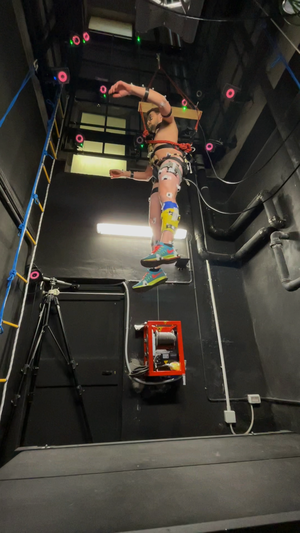
The videos of the first Moon landing with astronauts bouncing around the lunar surface are looking like a lot of fun - but jumping around on the Moon could also be good for astronaut's muscles, bones and the cardiorespiratory system.
Virgin Orbit begins “incremental” return to work as it seeks new funding
Wednesday, 22 March 2023 11:04
A small set of Virgin Orbit employees will return to work after a week-long furlough as the company attempts to raise money to remain solvent.
Scientists open door to manipulating 'quantum light'
Wednesday, 22 March 2023 10:59 For the first time, scientists at the University of Sydney and the University of Basel in Switzerland have demonstrated the ability to manipulate and identify small numbers of interacting photons - packets of light energy - with high correlation.
This unprecedented achievement represents an important landmark in the development of quantum technologies. It is published in Nature Physics.
For the first time, scientists at the University of Sydney and the University of Basel in Switzerland have demonstrated the ability to manipulate and identify small numbers of interacting photons - packets of light energy - with high correlation.
This unprecedented achievement represents an important landmark in the development of quantum technologies. It is published in Nature Physics. RNA base in asteroid samples suggests origins of life on Earth
Wednesday, 22 March 2023 10:59 The black particles from an asteroid some 300 million kilometres away look unremarkable, like pieces of charcoal, but they hold a component of life itself.
Scientists have discovered the chemical compound uracil, one of the building blocks of RNA, in just 10 milligrammes of material from the asteroid Ryugu, according to new research published on Tuesday.
The finding lends weight to a lon
The black particles from an asteroid some 300 million kilometres away look unremarkable, like pieces of charcoal, but they hold a component of life itself.
Scientists have discovered the chemical compound uracil, one of the building blocks of RNA, in just 10 milligrammes of material from the asteroid Ryugu, according to new research published on Tuesday.
The finding lends weight to a lon MIT physicists predict exotic new phenomena and give "recipe" for realizing them
Wednesday, 22 March 2023 10:59 In work that could lead to important new physics with potentially heady applications in computer science and more, MIT scientists have shown that two previously separate fields in condensed matter physics can be combined to yield new, exotic phenomena.
The work is theoretical, but the researchers are excited about collaborating with experimentalists to realize the predicted phenomena. The
In work that could lead to important new physics with potentially heady applications in computer science and more, MIT scientists have shown that two previously separate fields in condensed matter physics can be combined to yield new, exotic phenomena.
The work is theoretical, but the researchers are excited about collaborating with experimentalists to realize the predicted phenomena. The ESA’s new headquarters
Wednesday, 22 March 2023 08:30 Video:
00:03:03
Video:
00:03:03
After five years of intensive refurbishment works, the Headquarters of the European Space Agency has reopened its doors on rue Mario Nikis in Paris, France. As flexible as it is ultra-modern, ‘ESA HQ Mario Nikis’ is the very embodiment of a European organisation at the cutting edge of high technology and is resolutely open to the city it calls home.
Watch media session from ESA's 315th Council
Wednesday, 22 March 2023 06:49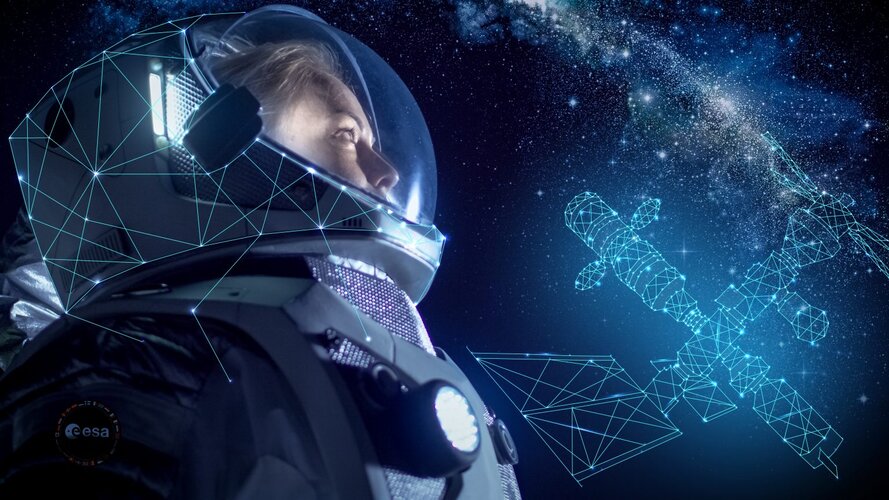
Join us on 23 March to hear about ambitious new ideas for space exploration from ESA's 315th Council, taking place in the freshly renovated ESA HQ Mario Nikis building in Paris.
Teens send experiments out of this world
Wednesday, 22 March 2023 03:01
From the time she was a child, Anna-Sophia Boguraev has had her eye on space. When she was 4, she built a cardboard rocket ship.
Terran Orbital further expands satellite production facilities
Wednesday, 22 March 2023 02:43
Satellite manufacturer Terran Orbital is planning another expansion of its factory in Southern California to accommodate an anticipated increase in government and commercial orders.
Frontier collects $10 million from AEI HorizonX
Tuesday, 21 March 2023 22:16
Frontier Aerospace raised $10 million in Series A funding from AEI HorizonX.
The post Frontier collects $10 million from AEI HorizonX appeared first on SpaceNews.


